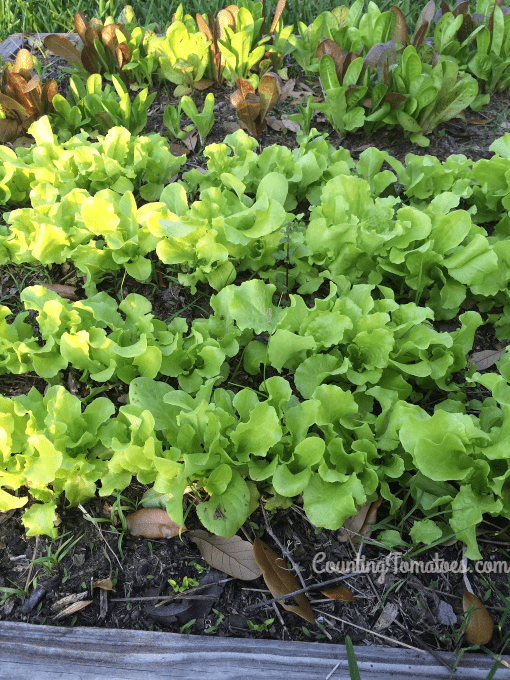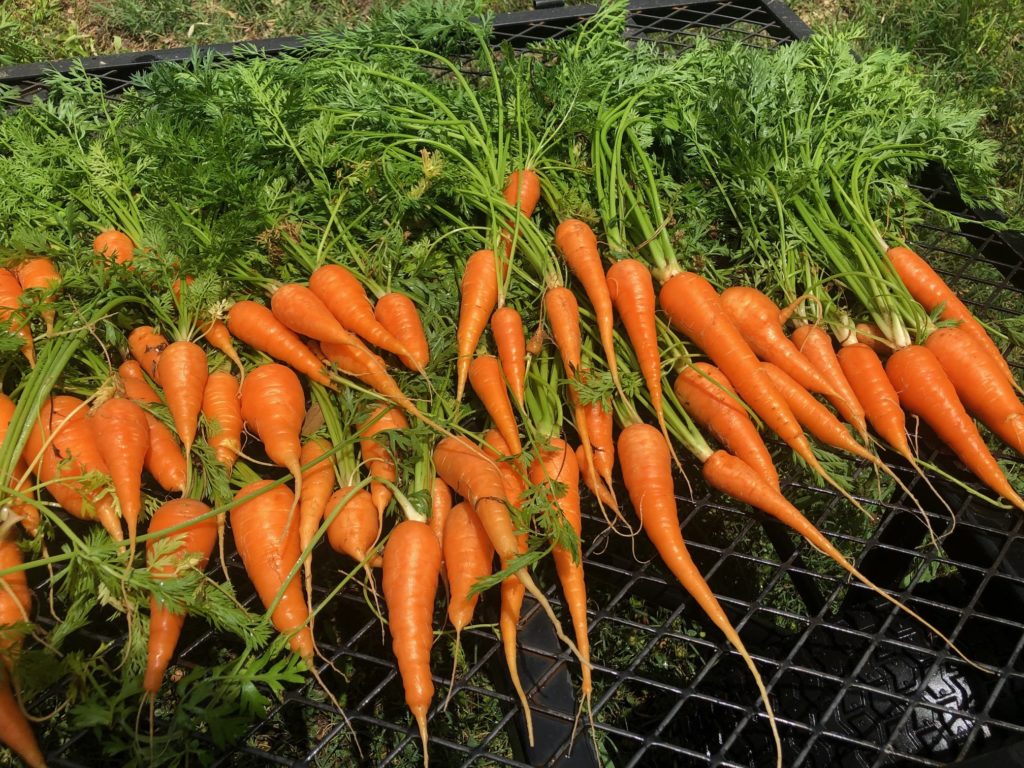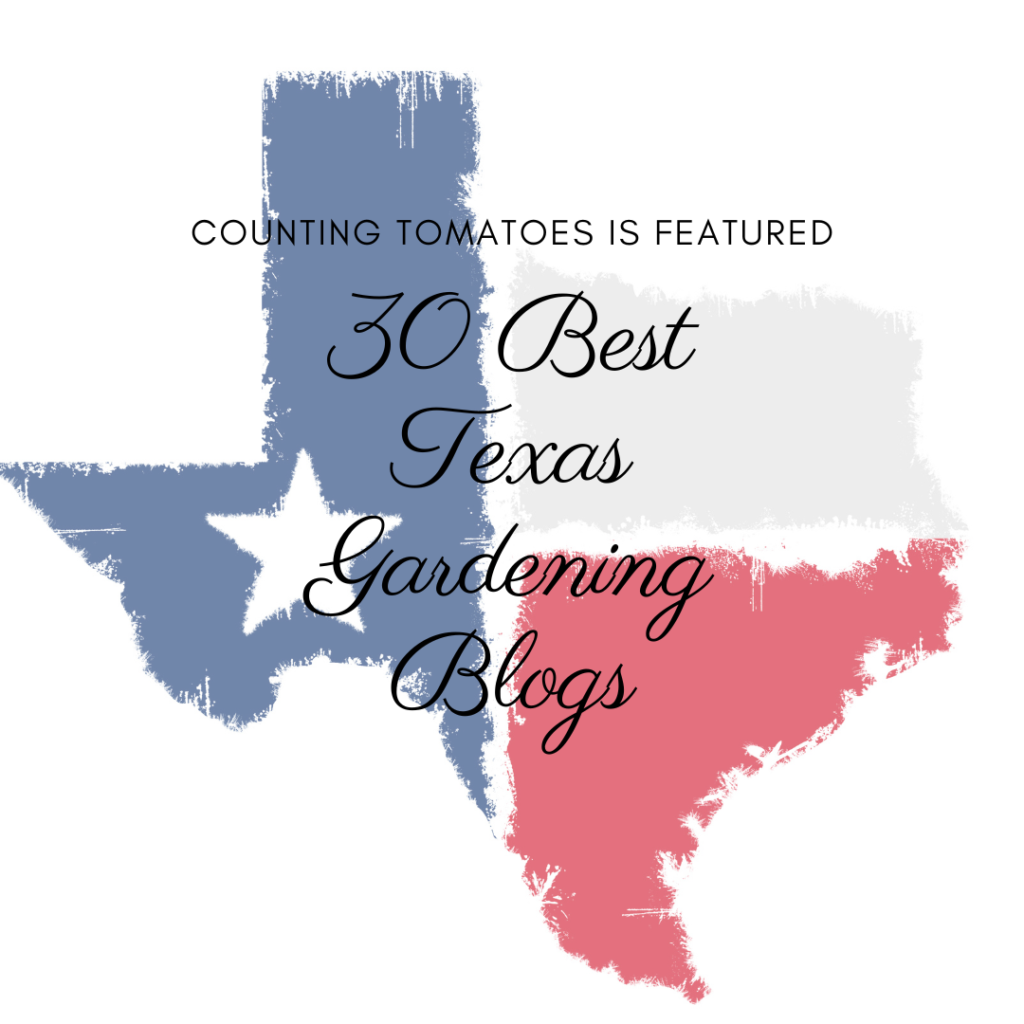Fall in Texas is the best time to grow a vegetable garden in south Texas. The cooler temperatures make it pleasant to work outdoors and in the soil. My recommendation for the 13 best fall garden vegetables to plant Texas are listed below. The first thing you need to know when planting a fall vegetable garden is your first frost date. You can find the first frost date by entering your zip code into the Farmer Almanac’s website to get the average first frost date for your area. You will use this first frost date to calculate when to plant your vegetable transplants or seeds to reach maturity before the first freeze.
Preparing the Garden Soil for a Fall Garden
If you will be using an existing garden space, remove any old plant matter from your summer or spring garden. Remove all weeds and grass that are growing in the garden. Refrain from composting diseased or insect damaged plants as this will transfer these diseases and insects to future plants.
If you are beginning a new garden from scratch, remove any sod or grass covering from your garden spot using a shovel or tarp the area for at least several weeks or even months depending on how warm your temperatures are. A dark tarp will smother the existing grass and weeds; the warmth will force any seeds to germinate and be extinguished.
A rototiller may be used to fluff the top layer of soil after you have completed one of the above methods of extinguishing a crop or starting a new garden bed.
Amend the soil with a slow release fertilizer along the planting rows prior to planting. You may also amend sandy soils with compost or aged horse or cattle manure to increase the level of organic matter.
Thoroughly water the garden plot and allow it to dry for several days prior to planting.
13 Best Fall Garden Vegetables to Plant
1. Broccoli
I do not plant a huge amount of broccoli, because I am the only one in my family who eats it. The best broccoli variety to grow is Green Magic. The Green Magic variety is heat-tolerant which makes it perfect for any warm fall days and it consistently produces uniform heads.
2. Cauliflower
Cauliflower has gained so much popularity lately due to everyone look for ways to cut carbs. You can substitute mashed cauliflower for mashed potatoes, riced cauliflower for rice or risotto and coarsely chopped cauliflower for pasta in macaroni and cheese. I plant Twister Cauliflower. The Twister Cauliflower is bred to have leaves that twist over the top of the cauliflower to protect it from yellowing in the sun. This natural growth habit saves the work of manually gathering the leaves in a rubber band to protect the cauliflower head while growing.
3. Corn
If you are in garden zone 8 or 9, you can plant a fall corn crop. If you’re in Zone 8, plant your fall corn seeds between August 1 – 15. Zone 9 gardeners can plant corn anytime in August. Choose varieties with a shorter maturity date around 70 – 75 days such as Silver Queen, Sugar Buns or Ambrosia. I plant at least 6 rows, 30′ long with 30″ – 36″ row spacing to ensure good pollination. Corn is wind pollinate, therefore, plant plants and rows for adequate pollination.
4. Culinary Herbs
Herbs are a good return on investment in the home garden as they are quite expensive in the grocery store, but add a wonderful fresh flavor to many dishes. Perennially herbs such as oregano, rosemary, sage and thyme I plant in my flower beds close to the kitchen door. Those perennial herbs come back year after year and I do not have to worry about disturbing them when working the garden soil each season. Annual herbs such as basil, cilantro and dill are I plant directly in the garden.
5. Kale
As a cut and come again crop I am able to cut from the same Kale plant multiple times over the garden season. Kale is even able to withstand a light frost which makes it a must grow in mild winters.
6. Lettuce
Butter Crunch, Black Seeded Simpson or Paris Island Romaine are my tried and true varieties. I find it easier to plant lettuce transplants I have started in the greenhouse rather than planting seeds directly in the garden. The lettuce seeds are so small they stand a much better chance in a seed tray when germinating.



7. Okra
If you are an okra lover, late summer / early fall is the perfect time to plant a second crop of okra. I have grown many okra varieties over the years, but I always come back to Clemson Spineless okra. The plants are not prickly and the pods are always the best tasting to us.

8. Peas
Sweet peas such as snow peas or sugar snap peas can also be grown as in the fall and winter months in south Texas. Ensure you plant them early enough so the blooms do not freeze. The English pea varieties do not like the heat, so wait to plant them approximately 8 – 10 weeks before you first frost date. They grow best when supported with a trellis such as a cattle panel or a net type trellis.
9. Peppers
The cooler weather in the fall months has always yielded the best pepper peppers and jalapenos I have ever grown. The peppers are do not suffer from sunscald and I always get a bumper fall harvest. My favorite fall peppers to grow are the Colossus Jalapeno and King Arthur Bell Pepper.
10. Root Vegetables
I always plant a row of carrots using Danvers and a rainbow mix carrot variety. Be sure to check out how to freeze carrots to enjoy throughout the year! Beets are another popular fall crop and last year I fell in love with the Touchstone Gold Beet variety. The golden beets do not have as much of a strong earthy flavor as typical red beets and can win over most beet hating individuals. Don’t forget to plant radishes. You can succession sow radishes every week or two to have a continue harvest for roasting or fresh eating in salads. My favorite radish to grow is the Champion variety.

11. Squash
A second round of summer squash is a great addition in the fall garden. Choose a disease resistant variety such as Delta Squash or Golden Delight Zucchini to resist any insect pressure and disease that may be lurking in your garden from your summer squash planting. I always try to practice crop rotation and plant my fall squash in a different area of the garden than I planted it during the summer months.
12. Swiss Chard
Bright Lights Swiss Chard is a favorite addition to my fall garden. You can harvest the leafy greens at any stage of growth for a quick sautéed side dish or add these to an omelet for a colorful punch.
13. Tomatoes
Fall is a great time to grow tomatoes as the summer heat has dissipated and tomatoes can set fruit much easier. If possible, plant your fall tomatoes in a separate area of the garden than where you previously grew tomatoes due cut down on diseases that may be harbored in the soil. Due to the time needed to grow a mature tomato plant it is best to plant tomato transplants from trusted local garden centers or start seeds for your own transplants in the summer in preparation for the fall garden. I prefer to grow determinate varieties of tomatoes in the fall such as Roadster or Celebrity tomatoes to ensure I get a bountiful harvest before the first frost.
Caring for a Fall Garden
Often in Texas we are still in a drought going into fall. It is important to keep the soil moist to germinate any fall planted seeds and to make sure the transplants do not wilt. Every week I fertilize my transplants with a balanced liquid soluble fertilizer such as the AgroThrive General Purpose fertilizer. Once the fruiting plants (tomatoes and peppers) are established I switch to a fertilizer to promote blooming such as the AgroThrive Fruit and Flower Liquid Fertilizer during the growing season. A balanced general purpose fertilizer is suitable for your leafy greens, root vegetables, and herbs throughout the growing season.
Fall corn is very nutrient dependent and a lot of fertilizer and water for success. I fertilize my corn with Hoss 20-20-20 water soluble fertilizer a week after planting and repeat 2 weeks after planting. On the third week, I alternate fertilizing with 20-20-20 and Micro Boost every week until tassels appear. Once tassels appear, I stop fertilizing.
The cooler months mean it’s the perfect time of year to enjoy the outdoors in Texas. We are fortunate in Texas we have a long growing season and can almost garden year around. Selecting the best varieties for the season will ensure the best results! Happy Gardening!



YUM! Nothing beats homegrown!! Thanks so much for linking up at the Unlimited Link Party 79. Pinned.